
Mechanized Peanut Cracking: EE200’s Ode to Engineering Design
Mechanically cracking a peanut without absolutely annihilating it. Such was the challenge presented to the richly diverse cohort enrolled in the second intake of the EE 200 – Sophomore Design Studio Course, offered by the Department of Electrical Engineering. Evolving from the preceding iteration of the challenge which called for the creation of a paper shredder, this batch was faced with a challenge more delicately intricate than its predecessor. Dr. Talha Manzoor expressed his itch to amp it this year, leading the students to design, assemble and subsequently exhibit a machine that could ‘shred’ a peanut, dispose of its shell, and extract its kernel. On the 1st of December 2023, as each team stood proudly beside their creation, the palpable sense of appreciation for the explicit act of 'creating' was undeniable.
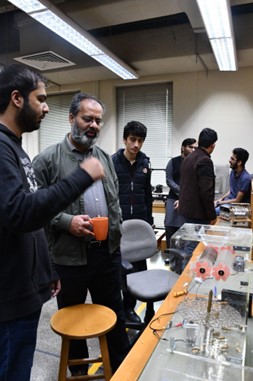
Beyond an elevated level of complexity to the task presented this time around, based on his teaching experience, Dr. Talha Manzoor noticed a gap between his students’ ideas and their ability to convey them adequately. He thus particularly focused on honing visual communication skills, through imparting the art of diagrammatically sketching out the workings of a machine before giving it a tangible form. This approach allowed students to consider, evaluate and document a myriad of prospective designs for the project’s components prior to finalizing them. In their journey of trial and error, one group recounted having gone over 20 different variations on their blade cuts before finding the one that achieved maximum precision.
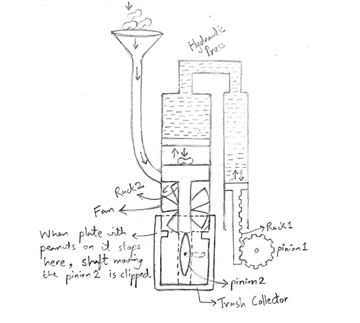
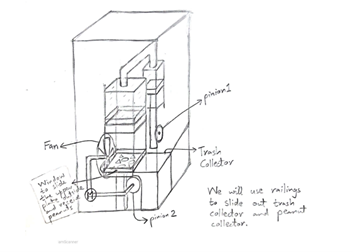
Students expressed the sheer tenacity such a venture had elicited from them. The process involved hours of cementing a solid preliminary understanding, followed by even more hours of accurately cutting through materials, including wooden and acrylic sheets, to construct the project physically. Although the finish line entailed presenting a machine that ‘worked’, students found themselves irrevocably consumed and enraptured by the piece-by-piece nature of the process. They wove inefficiencies beyond the project's requirements. For example, one of the projects, ‘The ShellShocker' achieved such mobility that it could be turned at odd angles during its runtime without hindering its functionality.
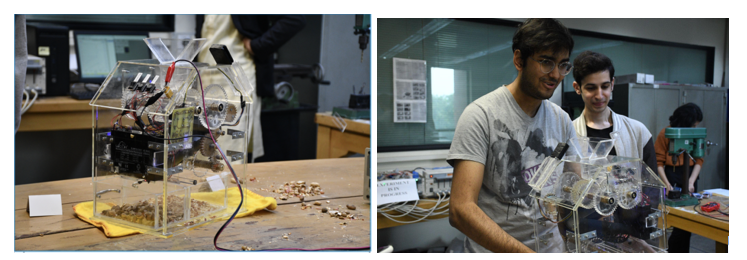
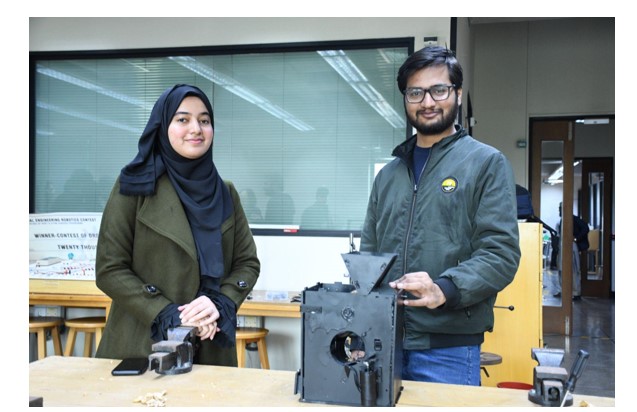
Placed at the epicenter of the exhibition, however, was a sleek, mysteriously ominous peanut cracker designed by Zoya Attiqe and Ahmad Faraz. It features a unique internal mechanism. Instead of leveraging two rotating blades like most of the other projects, this one employed nails jutting out of a block paired with one rotating wheel. The peanuts were ushered into the gap between the nails and the rotating blade, with the latter holding the peanuts in place before the decisive shredding moment. Beyond this project, others went on to incorporate advanced features, such as installing infra-red sensors to signal when the peanut shell tray reached capacity. Students also capitalized on different software and tools, such as laser cutters and 3D printers, which were readily available throughout the course.
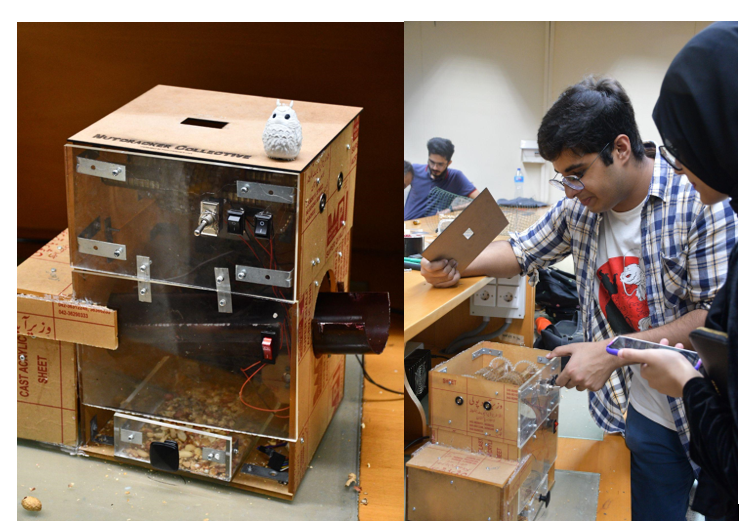
RIGHT - Faheem Shehzad unpacking the inner workings of his project.
The Nut-Cracker Collective, represented by a ‘mascot’ fondly crafted by Faheem Shehzad and Daniyal Ahmad, stood as a testament to the collective passion and dedication poured into these machines. Amidst the whispers of gears turning and circuits humming, Dr. Talha Manzoor had done it again. The exhibition was not merely a display of machines but a lyrical manifestation, affirming that in the hands of these engineers, the artistry of engineering had found its resounding voice once more.

